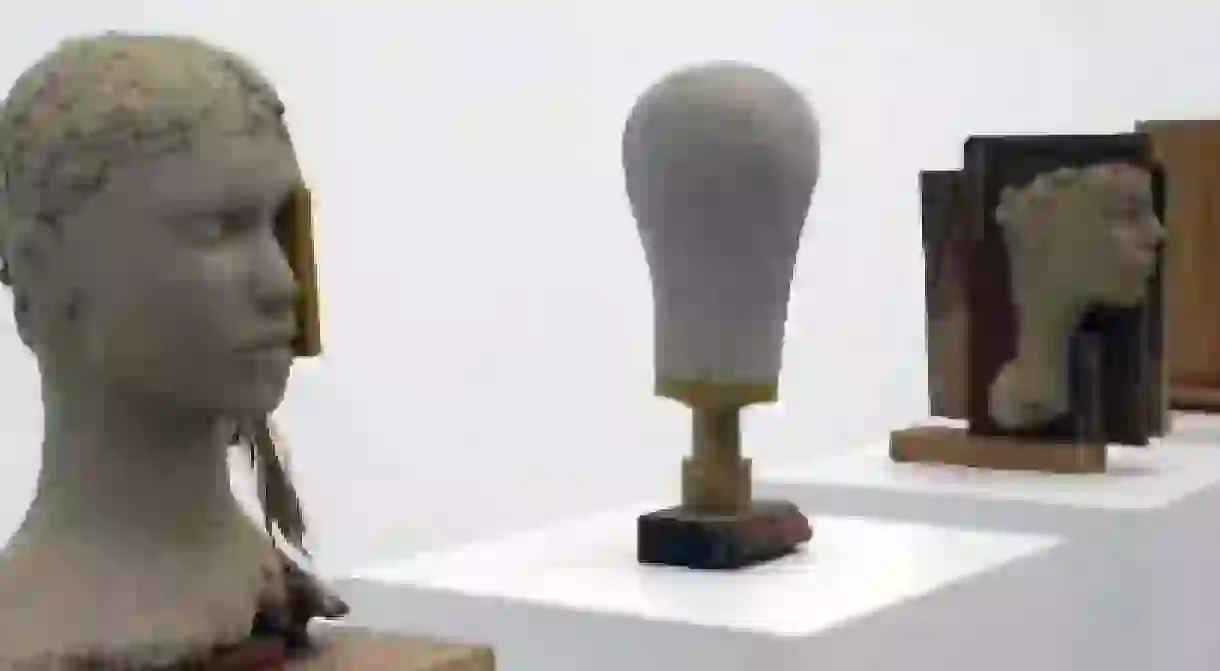The Netherlands’ 10 Venice Biennale Entrants You Should Know

Dutch art has always been innovative and inspiring. After all, the Netherlands produced Dutch masters like Rembrandt and Vermeer, as well as groundbreaking painters like Van Gogh and Mondrian. So it’s no surprise that Dutch artists have been consistently successful at the Venice Biennale. We take a look at the ten most recent Dutch artists who exhibited at this prestigious event.

1995 – Marlene Dumas
Recently the subject of a major retrospective at London’s Tate Modern, South African born painter Marlene Dumas (b. 1963), who currently lives and works in Amsterdam, represented the Netherlands at the 1995 Venice Biennale. Dumas is famous for her raw, intimate portraits of people—including celebrities and her own family members—that examine themes of life, death, identity, and sexuality. Her sumptuously painted figures are ghostly and disquieting, confronting the viewer with challenging material that is not easily forgotten.

1997 and 2007 – Aernout Mik
Film and installation artist Aernout Mik (b. 1962) investigates the disquieting intricacies behind the banality of everyday life. His film pieces are often incorporated into immersing architectural environments, which Mik also designs. Widely recognized as one of the most notable contemporary Dutch artists of the day, Mik has exhibited work at major museums worldwide, including MoMA and the Stedelijk Museum. Mik exhibited at the Dutch pavilion twice, once in 1997 alongside artist Willem Oorebeek, and again in 2007.

1999 – Daan van Golden
Daan van Golden (b. 1936) rarely holds exhibitions and produces pieces at his own pace, often slowly. Yet, since he arrived on the art scene in the 1960s, van Golden has been consistently considered one of the most important Dutch artists of his time. His work draws on various styles, from pop art to minimalism and abstract art, and various sources, including Japanese woodprints and the work of celebrated painters like Henri Matisse and Jackson Pollock. Appropriating and reimagining this imagery, van Golden produces meticulously crafted paintings that are both eye-catching and meditative.

2001 – Liza May Post
Liza May Post (b. 1965) produces filmic and photographic works that explore human vulnerability, alienation, and psychological discord. Resisting narrative norms, her films and photographs are minimalistic and largely ambiguous. Post explains: ‘In films you are required to sit through hours of detail, but the feeling of a film can be captured in a single minute. I am interested in that one moment.’ Post represented the Netherlands at the Venice Biennale in 2001.

2003 – Jeanne van Heeswijk
Jeanne van Heeswijk (b. 1965) is interested in the junctures between art, society, and social spaces. Her art often involves the transformation of abandoned public spaces and buildings into what she calls ‘interspaces,’ which aim to reconfigure the established relationships between people and places. Environmentalism and urban planning play key roles in the development and creation of her works, and social engagement is crucial once they are completed. Van Heeswijk exhibited at the Dutch pavilion in 2003.

2005 – Willem de Rooij
In 2005 Willem de Rooij (b. 1969) exhibited at the Venice Biennale as one half of a collaborative art duo with fellow Dutch artist Jeroen de Rijke (1970-2006). After de Rijke’s death in 2006, de Rooij continued to produce solo work across a variety of media, including film, installation, and sculpture. Often incorporating the work of other visual artists, as well as historical and anthropological elements, de Rooij explores thought processes, identity, and memory. He currently lives and works in Berlin.

2009 – Fiona Tan
Representation and memory are key themes in the work of Fiona Tan (b. 1966), who produces film and video works as well as photographs. Tan, who was born in Indonesia, grew up in Australia and now lives and works in Amsterdam. She occasionally draws on archival footage and other artists’ work to create moving film installations. Her work is characterized by careful attention to sensory detail and atmosphere. She has exhibited around the world, including the 2009 Venice Biennale.

2011 – Yannis Kyriakides
Yannis Kyriakides (b. 1969) is a sound artist and composer best known for his sound installations and hybrid compositions. He blends and synthesizes disparate sound elements into new and exciting forms, creating original spatial and temporal environments. Kyriakides is particularly interested in the ways that music communicates to its listeners, and its subsequent effects. He often includes digital media and textual aspects in his work, studying the idea of music as a language. He regularly collaborates with filmmakers and choreographers and currently teaches composition at the Royal Conservatory of the Hague.

2013 – Mark Manders
In 1986, at the age of 18, Mark Manders (b. 1968) began his ongoing and ever-expanding body of work entitled Self Portrait as a Building, created by an artistic alter ego as a sort of three-dimensional autobiography that distills Manders’ imaginings and obsessions into objects and architectural assemblages. His sculptures can also be interpreted as installations, combining everyday objects and ephemera with animal and human figures in works that bypass the structures of language and deposit the artist’s thoughts directly into the physical world. Manders represented the Netherlands at the 2013 Venice Biennale.

2015 – herman de vries
The art of herman de vries (b. 1931), who stylizes his name in lowercase ‘to avoid hierarchy,’ is mainly concerned with the complex relations between humanity and nature. Working primarily in painting, but also in sculpture, ready-mades, and installation, de vries draws on science and philosophy to question the role that human culture takes within the natural world. de vries, who was the subject of a 2014 retrospective at the Stedelijk Museum, will exhibit at the Dutch pavilion this year in a show that extends out to some of Venice’s deserted, overgrown islands. By Lucy Saldavia













